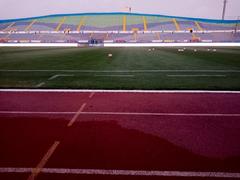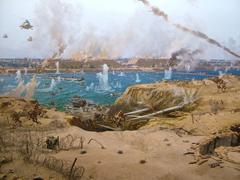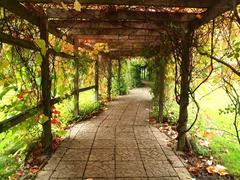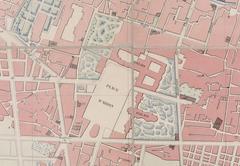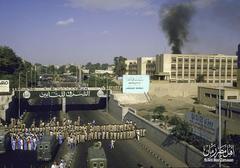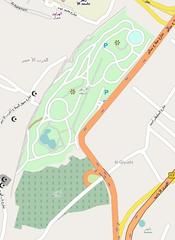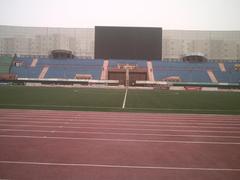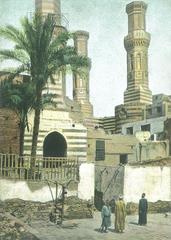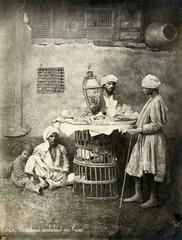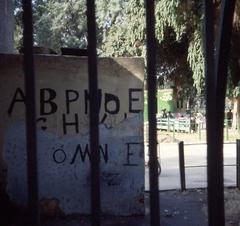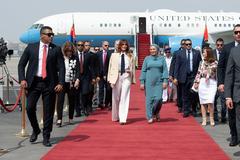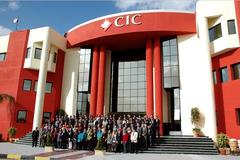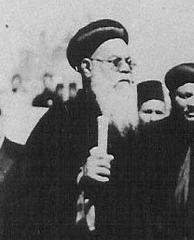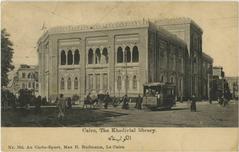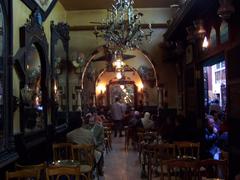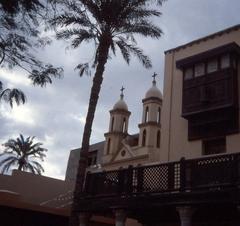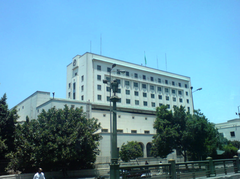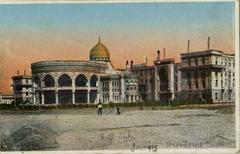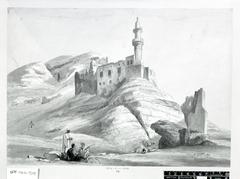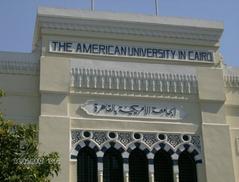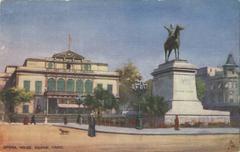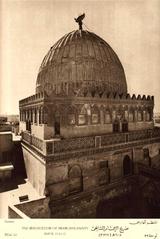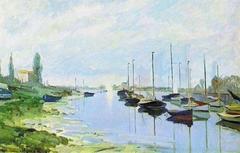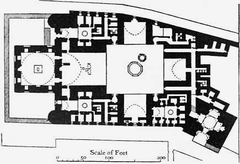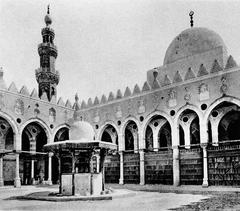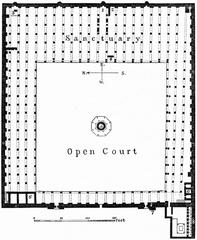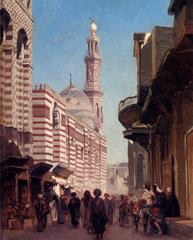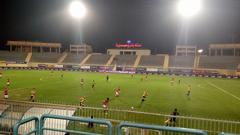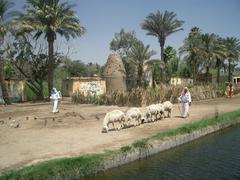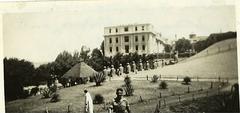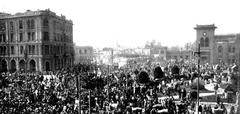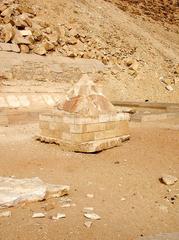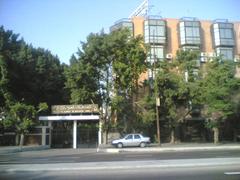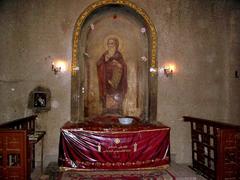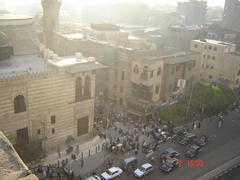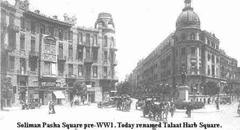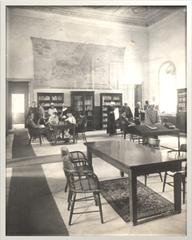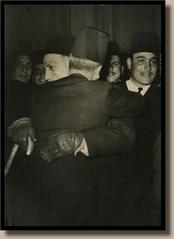Lulua Mosque Visiting Hours, Tickets, and Historical Sites in Cairo Governorate, Egypt
Date: 15/06/2025
Introduction
Nestled atop the scenic Mokattam Hills, the Lulua Mosque (Masjid al-Lu’lu’a, “The Pearl Mosque”) stands as a striking testament to Cairo’s Fatimid legacy and Islamic architectural innovation. Built between 1015 and 1016 CE under Caliph al-Hakim bi-Amr Allah, this three-level mosque offers panoramic city views and a unique insight into Fatimid religious practices. Thanks to meticulous restoration by the Dawoodi Bohra community, the mosque now welcomes visitors as both a living monument and a serene spiritual retreat. This comprehensive guide details the mosque’s history, visitor information, architectural highlights, and travel tips—ensuring an enriching experience for every traveler. (Archnet; Travel2Egypt; assignmentpoint.com)
Table of Contents
- Introduction
- Historical Background
- Visitor Information
- Unique Features and Visitor Experience
- Preservation, Restoration, and Modern Context
- Religious and Cultural Significance
- Nearby Attractions and Amenities
- Travel Tips and FAQs
- Conclusion
- References
Historical Background
Fatimid Foundation and Context
The Lulua Mosque was commissioned by Caliph al-Hakim bi-Amr Allah, one of the most influential Fatimid rulers, and completed in 1016 CE. It was conceived as part of a broader network of Fatimid religious sites intended to extend the dynasty’s influence beyond the heart of Cairo. Perched on the Mokattam Hills, the mosque’s strategic location provided both spiritual seclusion and sweeping views, enabling religious contemplation away from the bustling city below. (Archnet; Travel2Egypt)
Architectural Features and Innovations
Site and Structure
The mosque’s distinctive three-storey, tower-like form rises from the hillside, with each level partially carved into the rock. Its design was innovative for its time:
- Ground Floor: Built partly into the hillside, featuring a barrel-vaulted ceiling and a simple mihrab (prayer niche). The triple-arched entrance is an early example of a motif that would become central in Islamic architecture.
- Second Floor: Also barrel-vaulted, this level houses a more ornate mihrab and rectangular windows to bring in natural light.
- Upper Level: Divided into two rooms, likely used for private devotion, each room illuminated by a single window.
The mosque’s construction utilized local limestone and brick, and while much of the original stucco decoration has faded, remnants of intricate geometric and floral motifs remain. Multiple mihrabs on each floor are a rare design feature, reflecting special ceremonial functions. (Archnet; assignmentpoint.com)
Fatimid Architectural Identity
The Lulua Mosque exemplifies early Fatimid design, including multi-level prayer spaces, barrel vaults, and elegantly restrained ornamentation. While smaller than Al-Azhar or the Mosque of Ibn Tulun, its architectural ingenuity and hillside setting create a unique spiritual ambiance. (Local Guide to Egypt)
Visitor Information
Visiting Hours
The Lulua Mosque is open daily, generally from 9:00 AM to 5:00 PM. Hours may vary during religious holidays or special events, so checking ahead is recommended.
Tickets and Entry Fees
Entry is free for all visitors. Donations are appreciated and contribute to ongoing preservation efforts.
Accessibility
Due to its hillside location and historic architecture, the mosque is not fully accessible for visitors with mobility challenges. Steps and uneven surfaces are present throughout. Local tour operators can sometimes arrange assistance.
How to Get There
- By Taxi or Car: The mosque is about 20–30 minutes by taxi from downtown Cairo. Ride-hailing apps (Uber, Careem) are reliable; show drivers the mosque’s Arabic name (مسجد اللؤلؤة).
- By Public Transport: The nearest metro station is El Sayeda Zeinab (Line 1), but taxis or microbuses are needed thereafter. Walking from the base of Mokattam Hills is possible but steep and best avoided during midday heat.
- Parking: Limited roadside parking is available; early arrival is advised. (Egypt Tours Portal)
Best Times to Visit
Visit during early morning or late afternoon for cooler temperatures and optimal lighting for photography. October to April offers the most comfortable climate.
Unique Features and Visitor Experience
Guided Tours and Events
Guided tours can be arranged through local agencies or community groups such as the Dawoodi Bohra community. Occasional cultural events and religious gatherings take place, especially around Islamic holidays.
Photographic Highlights
The mosque’s elevated position provides panoramic cityscapes. Triple-arched entrances, surviving stucco, and layered prayer halls are ideal for photography. Respectful behavior is expected, especially during prayer times.
Preservation, Restoration, and Modern Context
After periods of neglect and a partial collapse in 1919, the Dawoodi Bohra community led a sensitive restoration in the late 20th century. Using traditional methods and materials, they rebuilt collapsed sections while preserving the mosque’s architectural spirit. This balance of authenticity and accessibility allows the site to remain both a monument and a living place of worship. (Archnet)
Religious and Cultural Significance
The Lulua Mosque, originally a neighborhood place of worship, played a role in supporting local prayer, learning, and spiritual retreat. Its multiple mihrabs and contemplative setting reflect Fatimid theological and cultural aspirations. Today, the mosque stands as a vibrant symbol of Cairo’s diverse Islamic identity and the resilience of its religious heritage. (Travel2Egypt)
Nearby Attractions and Amenities
While amenities near the mosque are limited, the Mokattam district and the City of the Dead offer small shops and eateries. Essential supplies like water should be brought with you. Other notable sites in proximity include:
- Citadel of Saladin
- Mosque of Ibn Tulun
- Mosque of Amr Ibn Al-Aas
- Khanqah and Tomb of Shahin El-Khalawati
These sites collectively showcase Cairo’s layered religious and architectural history. (Hurghada Lovers)
Travel Tips and FAQs
- Dress Code: Modest attire is required. Women should cover hair and shoulders.
- Etiquette: Remove shoes before entering prayer halls. Remain respectful and quiet, especially during prayers.
- Sun Protection: Bring hats and sunscreen. Shade is limited.
- Safety: The area is safe during the day; travel in groups or with a guide for the best experience.
Frequently Asked Questions
Q: What are the Lulua Mosque’s visiting hours?
A: Daily from 9:00 AM to 5:00 PM, but check ahead for changes during holidays.
Q: Is there an entry fee?
A: No, entry is free. Donations are appreciated.
Q: Is the mosque accessible for people with disabilities?
A: Accessibility is limited. Arrange assistance if needed.
Q: Are guided tours available?
A: Yes, through local agencies and community groups.
Q: Can I take photos inside the mosque?
A: Yes, outside of prayer times and with respect to worshippers.
Q: What other sites can I visit nearby?
A: The Citadel of Saladin, Mosque of Ibn Tulun, and Khanqah of Shahin El-Khalawati are all within a short drive.
Conclusion
The Lulua Mosque is a remarkable piece of Cairo’s Islamic heritage, offering visitors an intimate window into Fatimid architecture, religious history, and the city’s ever-evolving spiritual landscape. Its hillside location provides serenity and dramatic views, while its unique three-level design and careful restoration make it a must-see for architecture lovers, historians, and cultural travelers. Plan your visit during the cooler seasons, consider joining a guided tour, and explore the rich tapestry of Islamic Cairo for a truly rewarding experience. For updates, tour bookings, and exclusive insights, download the Audiala app and follow our social media channels.
References
- Archnet: Lulua Mosque
- Travel2Egypt: Islamic Cairo and Its Religious Significance
- AssignmentPoint: A Visit to a Historical Place – Lulua Mosque
- Hurghada Lovers: Mosques in Bab el Wazir Street
- Egypt Tours Portal: Cairo Tourist Attractions
- Living Nomads: Cairo Travel Blog
- Victoria and Albert Museum: Lulua Mosque Photograph
- MIT OpenCourseWare: The Architecture of Cairo
- Egyptopia: Mosque of El Lulua
- Islamic Landmarks: Mosques in Egypt
- Egypt Planners: Mosques in Cairo
- Trek Zone: Lulua Mosque Cairo
- Official Cairo Tourism Website
